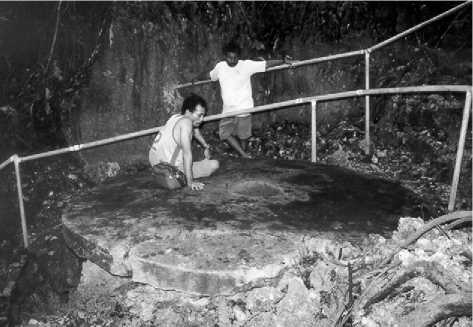The ability of Micronesians to cross vast distances and interact with other island communities was crucial to their successful colonization and long-term settlement, livelihood and, at times, survival. Anthropologists and archaeologists are not only interested in discovering when the islands were settled, but how islanders initiated or maintained contact with each other and the items exchanged as a result. Because interisland interaction was fairly commonplace in many parts of the Pacific, including Micronesia, the transfer of commodities, ideas, and knowledge becomes a crucial part of trying to understand why and how cultures may have changed over time.
One of the most well known and documented exchange systems in Micronesia was the formal gift exchange between the people of Gagil on Yap and coral atoll dwellers from the east. This exchange system, called the sawei (literally referring to the Ulithian term for baskets used to transport gifts), involved peoples from Ulithi, Fais, Woleai, Eauripik, Sorol, Ifalik, Faraulep, Lamotrek, Elato, Satawal, Polowat, Pollap, Pulusuk, and Namonuito who paid tribute to the Gagil district in the form of shell valuables, sennit cord (coconut fiber rope), and various other items in return for goods that were scarce in the

Figure 9 Stone money disk found at the Metuker ra Bisech quarry site in Palau. Photo by Scott M. Fitzpatrick.
Low-lying coral islands (e. g., pottery, timber). This exchange required crossing hundreds of kilometers of open ocean with outrigger canoes and began centuries prior to European contact (Figure 9).
Another interesting case of exchange was the quarrying of ‘stone money’ by Yapese islanders in western Micronesia. Disks of limestone (also referred to as rai by the Yapese and balang in Palauan) up to 4.5 m in diameter and weighing over 8 tonne, were carved from the many natural limestone caves around the Palauan archipelago and transported by oceangoing canoes or European trading ships back to Yap Island 400 km away. The production of these exotic valuables is known, in part, from European explorers who participated in the transport of these disks back to Yap in the 1800s. A rich collection of ethnographic data and oral traditions suggests that stone money manufacture took place prior to European contact. This makes these megaliths the heaviest portable objects ever moved over open ocean by Pacific Islanders. Although the sawei and stone money production are two of the most prolific examples of exchange and cross-cultural interaction in Micronesia, there are numerous other cases of artifacts being transferred between islands. Pottery from Palau found in Ngulu, Yapese pottery, and volcanic stone recovered on eastern atolls, and similarities of pearl-shell trolling lures found in the Marshalls and Solomon Islands are indicative of long-term prehistoric exchange systems operating within and between widely separated archipelagos.




 World History
World History









